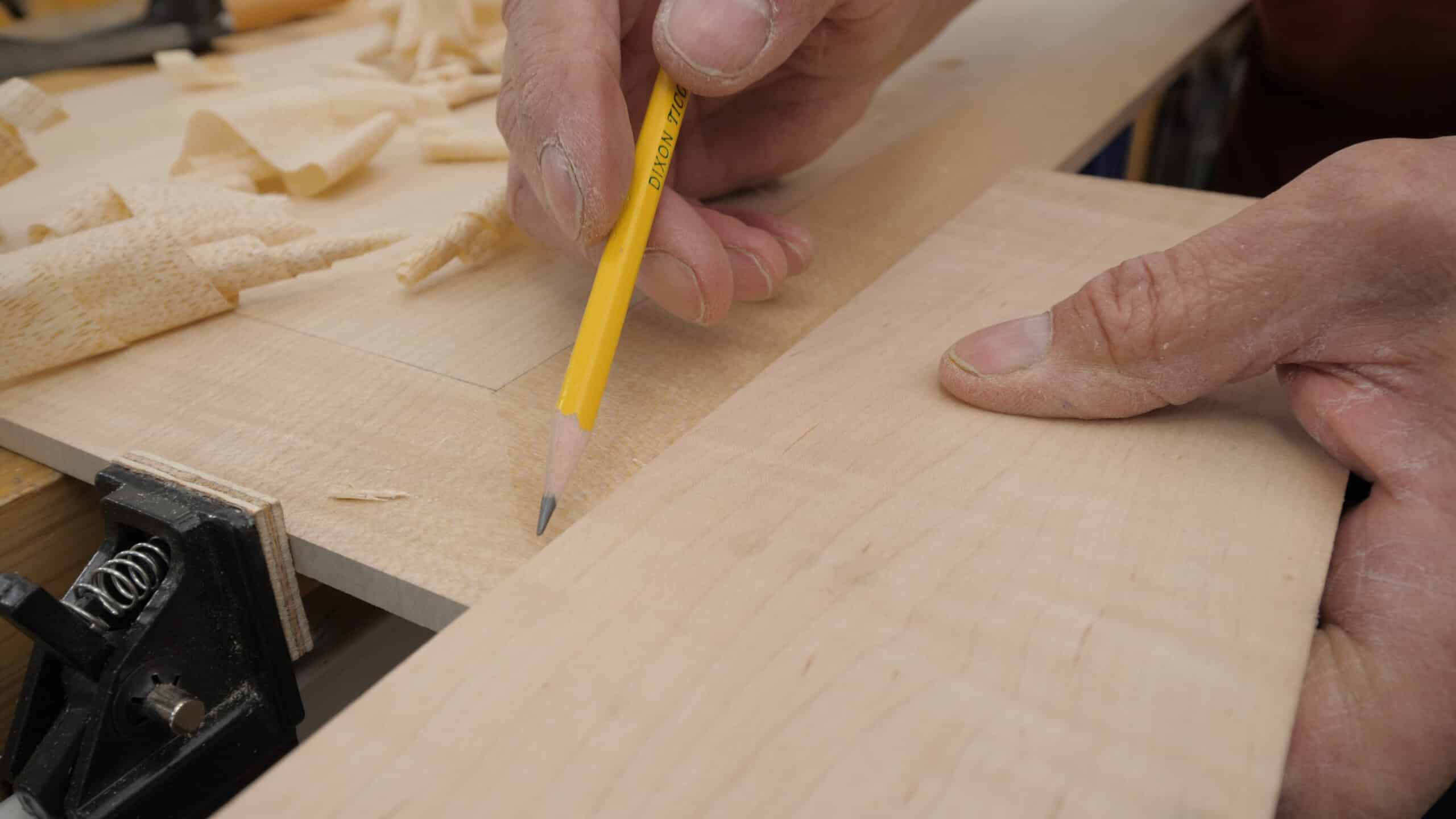Blanket Chest: Episode 4
Posted 18 April 2018
This is an episode in a paid series. Want to watch it? You just need to sign up as a paid member, and you can enjoy this video and many other videos we think you will love.
The wood for the panel is selected then jointed and glued up. Once dry, the panel is scraped and cut to size before being chamfered and fitted to the frame.


Paul must have made thousands of things over the years, but the obvious pleasure he still gets from making things, as seen by his huge grin at the end of this video is just fantastic.
Beautiful Job Paul.
Paul,
The part where you edge-jointed the two panels and made the very specific comment about the gap in the boards making them out of square relative to each other, after you paired them together and then used clamps on the edges to bring them back to square to one another…I found that to be invaluable and am not sure why it never registered so clearly to me why I often have edge jointing problems when putting two boards in my vise like that. In my head I’ve just “assumed” that it was an issue with the vise and I never thought any further (and just accepted my mediocre result). That is one thing I really LOVE about woodworking in the manner that you teach–it really does require much focus and thoughtful analysis to achieve optimal results. Seeing you encounter issues I frequently have (and which I erroneously dismissed as my own shortcomings), and then hearing you explain them and providing the appropriate methods to overcome them…Thank you! It is often the seemingly smallest things that can throw me off and it can be the simplest of explanations that keeps things on track.
So, I found this part of the video particularly useful! Keep up the great teaching (and beautiful work)!
-David
Very nice
Is there some type of plan available for this blanket chest with dimensions etc.
Thanks
Eddie Mack
These are usually on the info video page.
https://woodworkingmasterclasses.com/wp-content/uploads/2018/03/Blanket_Chest_drawing.pdf
Another very enjoyable episode, thank you. I am keen to give this one ago, but what always hinders me is being able to mill the pieces to the correct dimensions and getting same pieces consistent, to give me a good starting position. Due to the lack of a bandsaw, i find this difficult.
Regarding the episode, I found that this one was less edited and therefore felt more natural and free flowing from Paul; harking back to the early projects that Paul did, which i love. Maybe the time constraints for producing this was the cause? Anyway, really enjoyed it – thanks again.
I can definitely relate to this. Without access to a power planer/jointer/band saw, a significant amount of time can be spent just thicknessing and squaring stock for projects (especially if you’re working with wood dimensions found at the “big box” hardware stores). My last project was the tool chest and I remember spending hours with my #4 and #5 getting the stock prepped before I could even start any fabrication.
A couple things that might help: 1) use the dimensions of the stock wood you pick up at the hardware store to your advantage. Even though they don’t match Paul’s projects directly, the boards are usually cut fairly square only needing some surface planing. 2) Treat the time spent prepping stock as practice for honing sawing and planing skills. Before the tool chest project I was terrible at planing end grain, especially in pine. By the time I was done prepping the stock I had a good system in place that translated well into the rest of the project.
As Paul says, “It’s not what you make, but how you make it.”
would it not have been easier to rip panels on a saw horse? or was this just for ease of viewing for others?
Hi Don,
Personal preference, but this method is great once you’re used to it. Holds the wood in place solidly and means you don’t have to move away from the bench,
Love the camera work. Really brings the project to life.
21:12 I know, I’m foul, but I couldn’t help but think of Seinfeld and George Costanza …
“I’m not going to tell her about your shrinkage” lol
i have troubles to chamfer : even if i draw a line, i can’t make the plane follow it nicely as does Paul. Is there any video wich explains the technique more in depth ?
I can HEAR just how sharp that saw is!
What I meant to say is, I can HEAR just how sharp that saw is……….when cutting the panels. Sorry for any confusion?